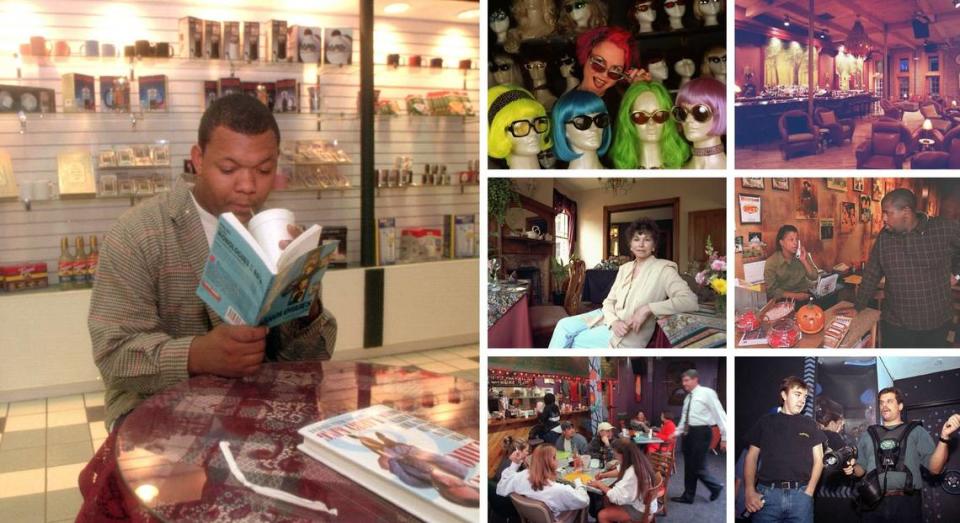‘90s memories on replay: Let’s rewind and see what Charlotte was like back then
I’m really into nostalgia these days, thanks to the interviews I’ve had while writing about Harper’s Restaurant’s recent closure and long-gone sit-down Pizza Huts.
As Charlotte shapeshifts before my eyes, I have this sense of longing for a Charlotte I didn’t even know — a slower city, driven by art and food just as much as it was driven by finance.
To ease my nostalgia ache, I’ve been indulging myself and eating at some classic restaurants, talking to people who actually lived and breathed a Charlotte of the past. Specifically the 1990s, when it seemed Charlotte’s culture really started burgeoning.
And now that low-rise jeans are back in, I’ve been imagining what a night out at one of the popular Charlotte bars and clubs in the ’90s was like. Denim cut-offs, no iPhones, fishbowl drinks — I’m all about it. Well, everything except waxing my eyebrows too thin. That can stay in the ’90s.
[I’M NOT OLD, JUST RETRO: How to spend a weekend like it’s 1990-something.]
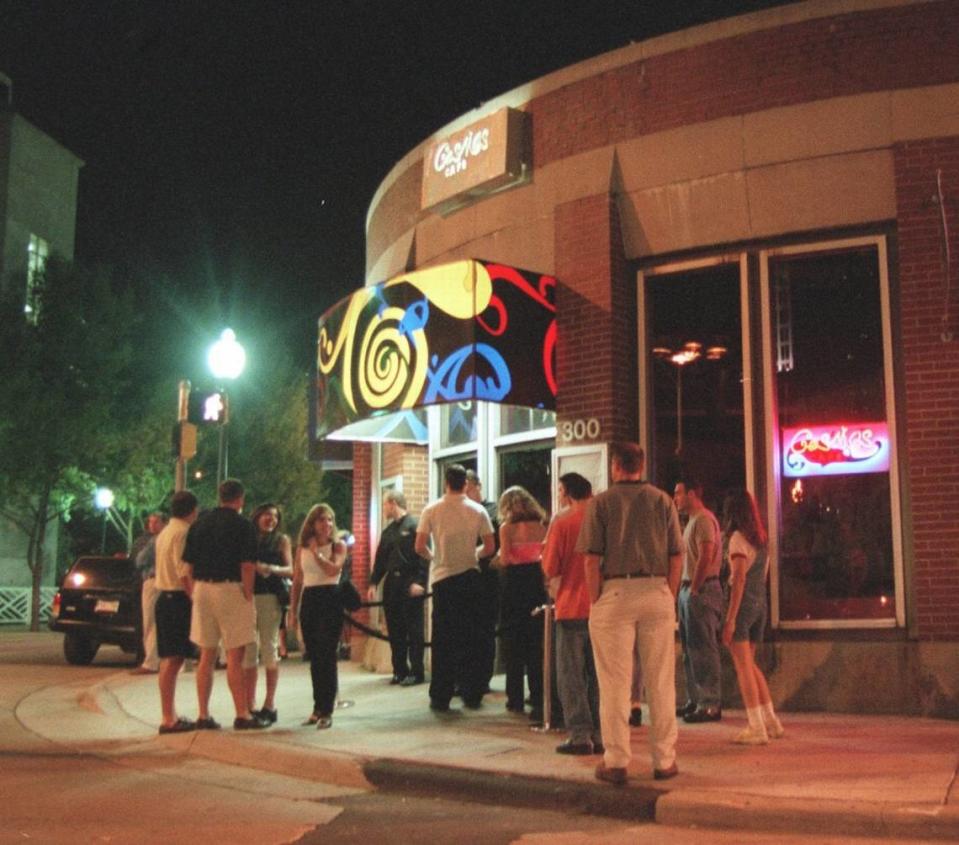
When people say “Charlotte’s not like it used to be,” what does that mean? I wasn’t here in the “used to be” days. So, determined to get a sense of Charlotte in the ’90s, I sought out the stories from several longtime Charlotteans — many of whom really paved the path of Charlotte’s alternative scene — about the placemakers of the city at the time.
Turns out, it’s the local feel, small business ownership and artistic expression that defined this era.
Music and art in Charlotte
“Late ’91 is when NoDa started taking off … During that time, multitudes of art galleries opened … music venues like Fat City, a few restaurants, and boutiques opened,” said Jerry Kirk, an artist dedicated to preserving the history of NoDa, in part by running the NoDa in the 1990s Facebook page.
This area north of Davidson even got its abbreviated NoDa name in the mid-’90s too, as the area evolved from a rundown mill district into an artistic strip of Charlotte. A 1995 Charlotte Observer article stated that gallery owner and painter Steve Holt had christened the area “NoDa,” short for North Davidson.
“If there’s a place for new ideas, this is it,” Holt said at the time. “Hey, we’re creating history here. Fortunes are made by people who create excitement.”
When galleries and art venues cropped up, ’90s culture embraced an air of alternativeness and — not to sound cliche — grunge. Charlotte was on board with that trend, thanks to a plethora of smaller, independent music venues.
[NEXT UP ALONG MEMORY LANE: Photos of Charlotte’s NoDa neighborhood from the early 2000s.]
Two integral parts of the art scene were The Double Door Inn and The Milestone Club, said Hope Nicholls, musician and owner of the clothing boutique Boris and Natasha. The Double Door Inn opened in 1973 and The Milestone Club in 1969, making these well-established local joints long before the ’90s. The Double Door Inn closed in 2017, but was once a jazzy, honky-tonk, punk place to be with pool tables and a famed surprise appearance by Eric Clapton. The storied, stickered, and graffitied Milestone Club is a true old-school venue with a notable white-and-green exterior.
[‘The CBGB of the South’: There’s a new film on Charlotte’s The Milestone Club.]
The Pterodactyl was a ravey underground club that opened in 1987. According to former club-goers like Gary Mauney, it was a “cutting-edge punk rock/alternative dance club!” Apparently, there were even 25¢ sake shots. The doors closed in 1999.
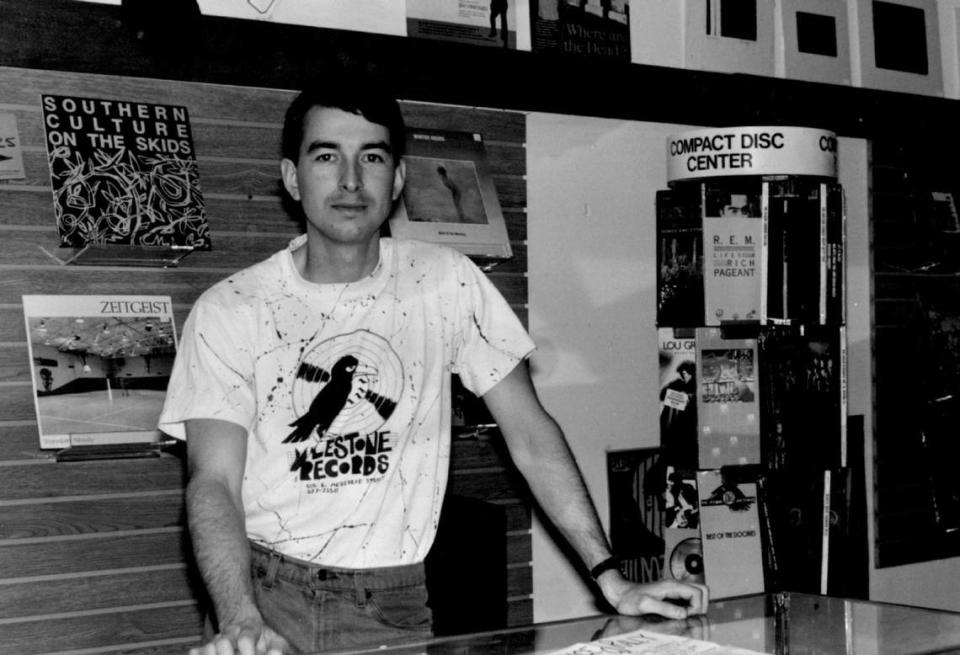
Fat City in NoDa, outside of being a funky deli by day, was a magnet for punk-rock fire eaters in NoDa by night under the drum and hum of live music.
NoDa’s gallery crawls at places like Center of the Earth, which persevered until 2010, were the heartbeat of the burgeoning social and art scene in the Queen City in the ’90s, Kirk said. Scrub through this YouTube video of a gallery crawl in 1996, and you’ll get a feel for the eccentric gallery crawls along North Davidson Street.
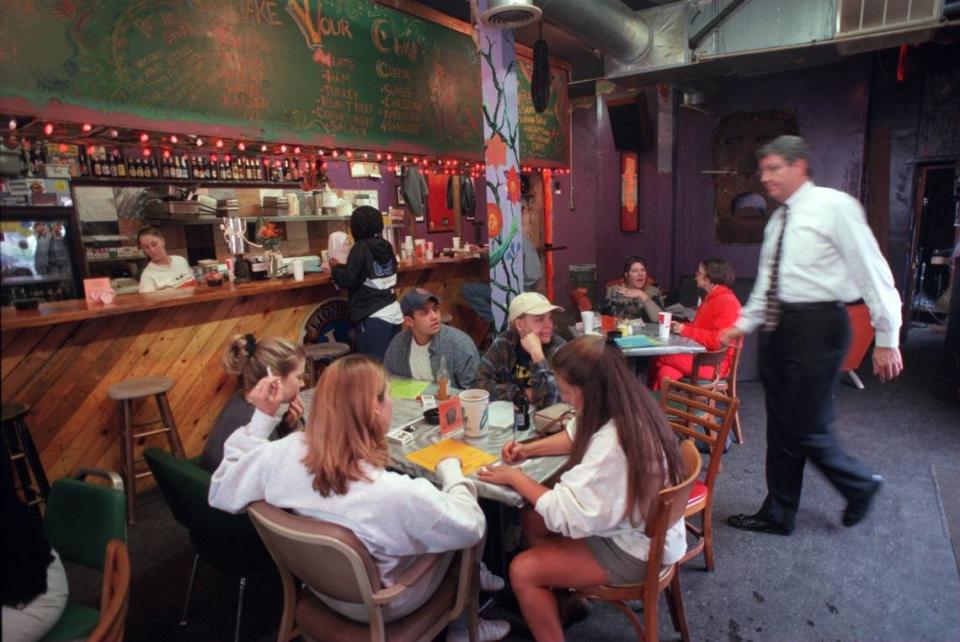
Small shops shaped the neighborhoods
There was a mutual, complementary relationship that neighborhoods had with these local art institutions and even small, artistic-leaning businesses like boutique fashion stores.
“Starting in the ’90s is where you started to see independent businesses begin to flourish,” Nicholls said. “Neighborhoods started to coalesce around those businesses.”
NoDa and Plaza Midwood are prime examples. “People chose to work there because it was cool, and they chose to rent buildings and start small businesses because it was very affordable,” Nicholls said.
Just on one block of Plaza Midwood’s Central Avenue in the ’90s, three clothing boutiques sold interesting fashion from New York, London and LA, said Nicholls. Nicholls helped run one of them, Superior Feet.
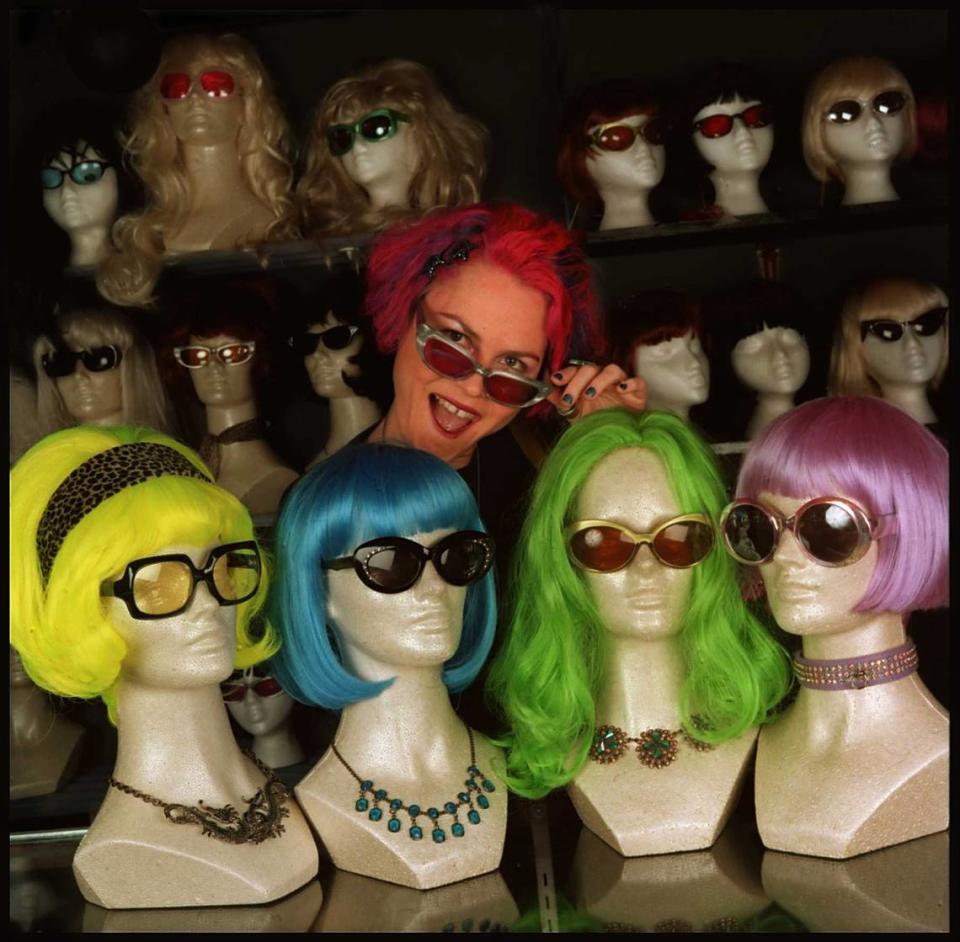
Today, Central Avenue’s quirky one-off shops have largely been replaced by chains like Emmy Squared Pizza, Arrow and one too many vape shops. No, seriously — I’m still baffled how and why there are two different vape shops directly next to each other on Central Avenue.
However, there are still-standing retail spots that evolved from an original, previous concept in the ’90s, and have maintained that distinct homegrown feel.
Longtime Charlottean Steven Pilker said Boris and Natasha came from Superior Feet. Scott Wishart, former manager of one of Charlotte’s oldest music shops, Manifest Discs, opened Lunchbox Records on Central Avenue in 2005, which, according to the website, “started as a label to focus on the Atlanta punk scene in 1990,” but has clearly now extended its offerings as a vast record store.
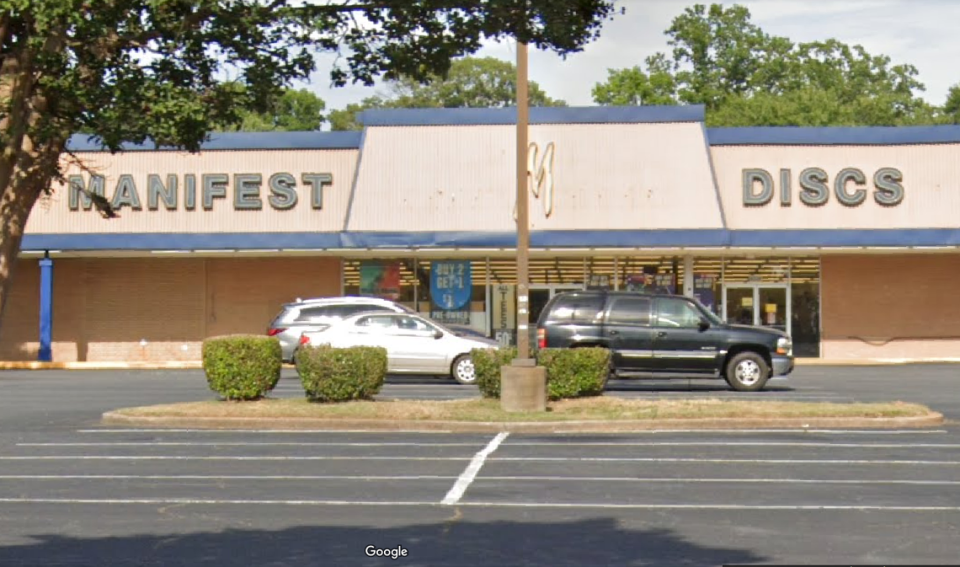
Food and drink was important as ever
Referencing the placemaking power of small business, Nicholls said, “We were like an anchor that helped that neighborhood burgeon.”
It wasn’t just retail though; the growing restaurant and bar scene shaped neighborhoods, too.
“That’s what you saw in South End with places like Pewter Rose Bistro and Tutto Mondo,” Nicholls said. Both spots are now closed.
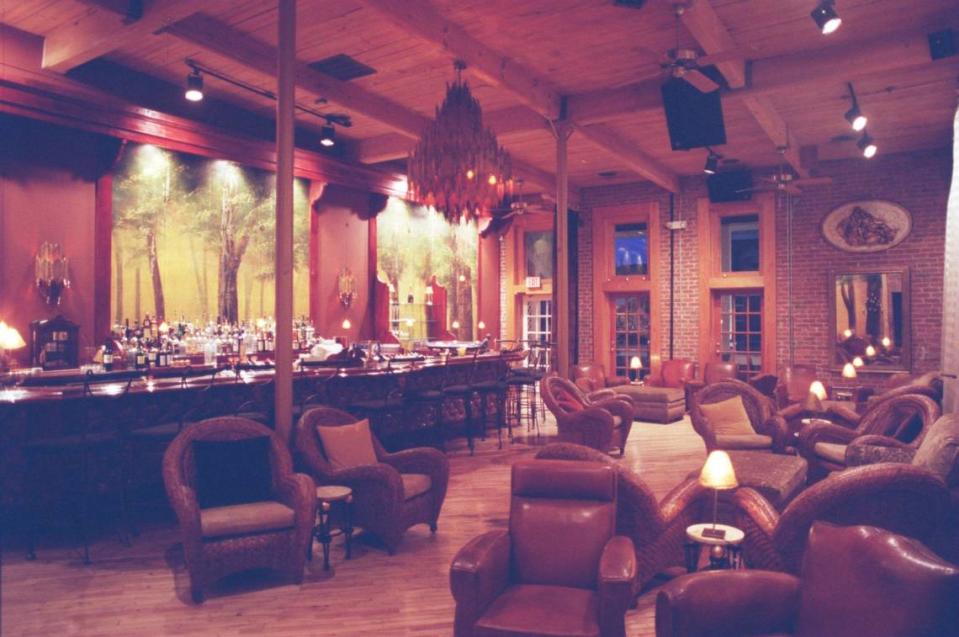
Other ’90s restaurants that deserve a nod that aren’t around anymore: Carpe Diem, Sammy’s Deli or the old sit-down Pizza Huts scattered across the city, too. Apparently, the Park Lanes Bowling Alley used to have the Park Lanes Restaurant, which supposedly had standout barbecue and onion rings worth going back for.
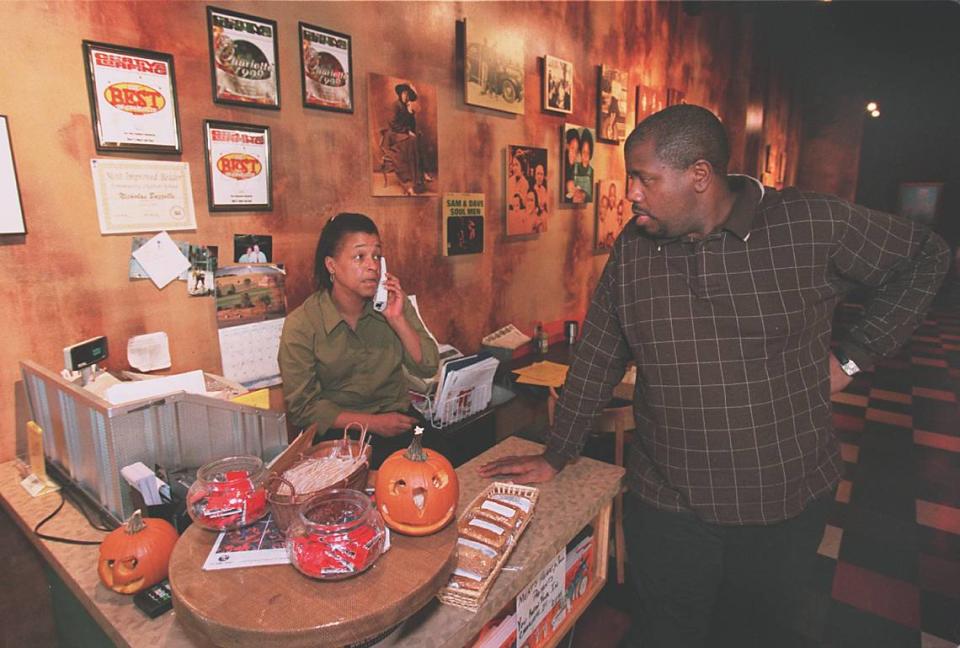
As for the institutions that are still open, Nicholls pointed to Comet Grill, in business since 1996. Classics like Alexander Michaels circa 1983 and Mert’s Heart and Soul since 1998 are still up and running.
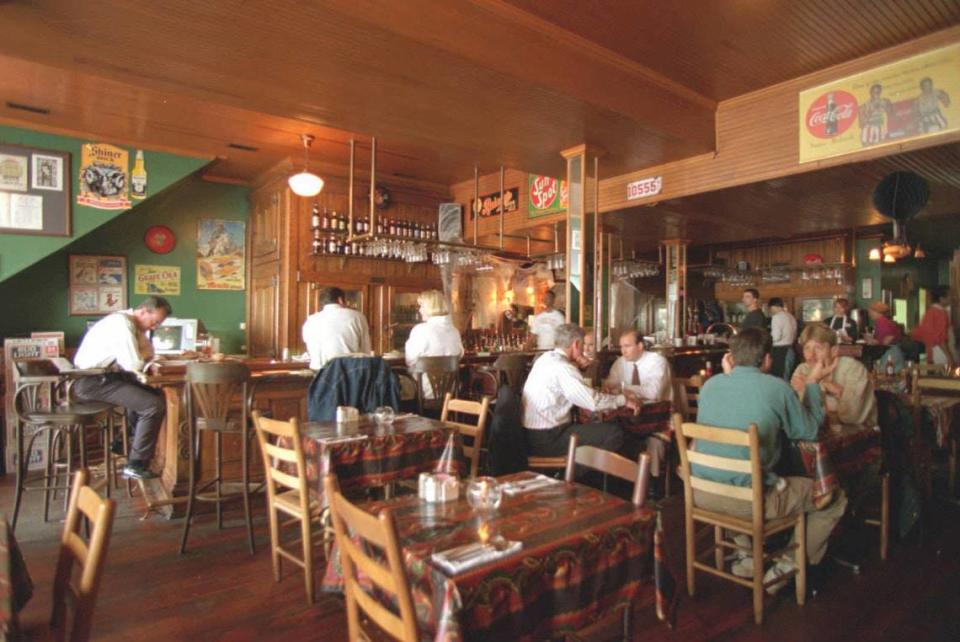
Simmons Restaurant opened its original location in 1989. It closed in 2014, and was in the space that Freshwaters now occupies. Eddie’s Place has been serving up dreamy brunch food since 1997 and Mama Ricotta’s has been feeding Charlotte with the best penne alla vodka since 1992. Sub One Hoagie House is going on over 30 years in Fourth Ward.
On the fine dining side, it’s hard to leave out the McNinch House, a true special occasion spot which was awarded its first AAA Carolinas Four Diamond Award in 1997. The late Ellen Davis and late sommelier Anthony Wesley were highly-regarded early leaders in Charlotte’s culinary scene.
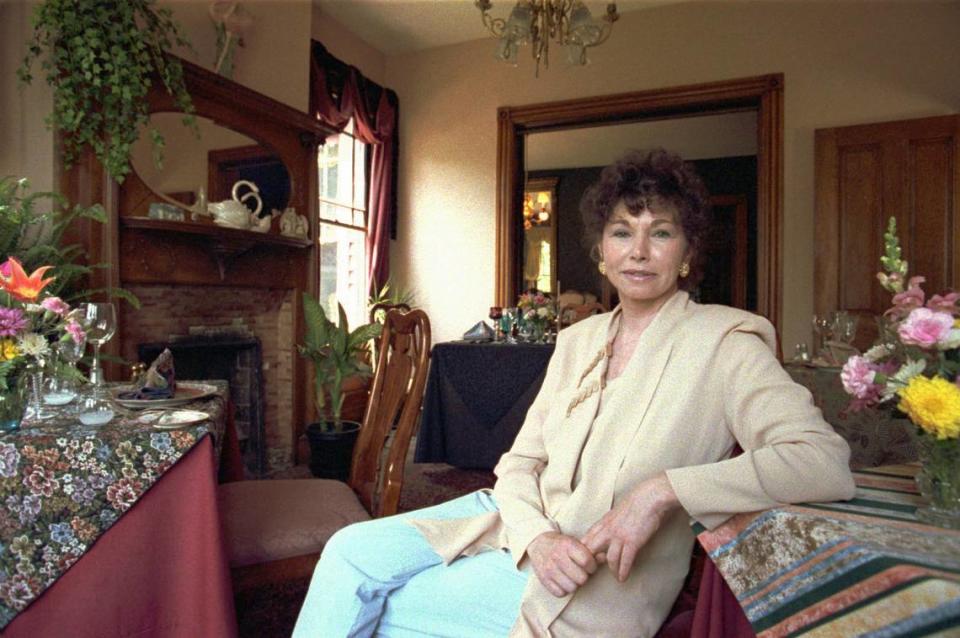
Steven Pilker mentioned Landmark Diner and Thomas Street Tavern as two prime ’90s institutions that are still very much alive.
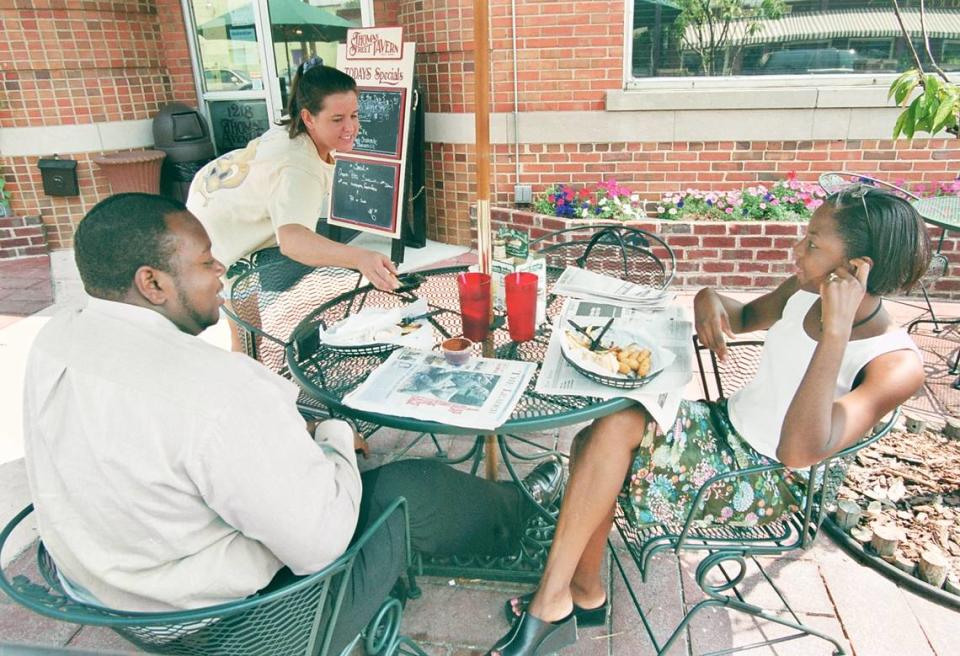
“Thomas Street has always been always a great, diverse place,” Nicholls said. It’s a valued institution to all kinds of people in Charlotte.” And, admittedly, the back patio with ping pong tables and cornhole can’t be beat.
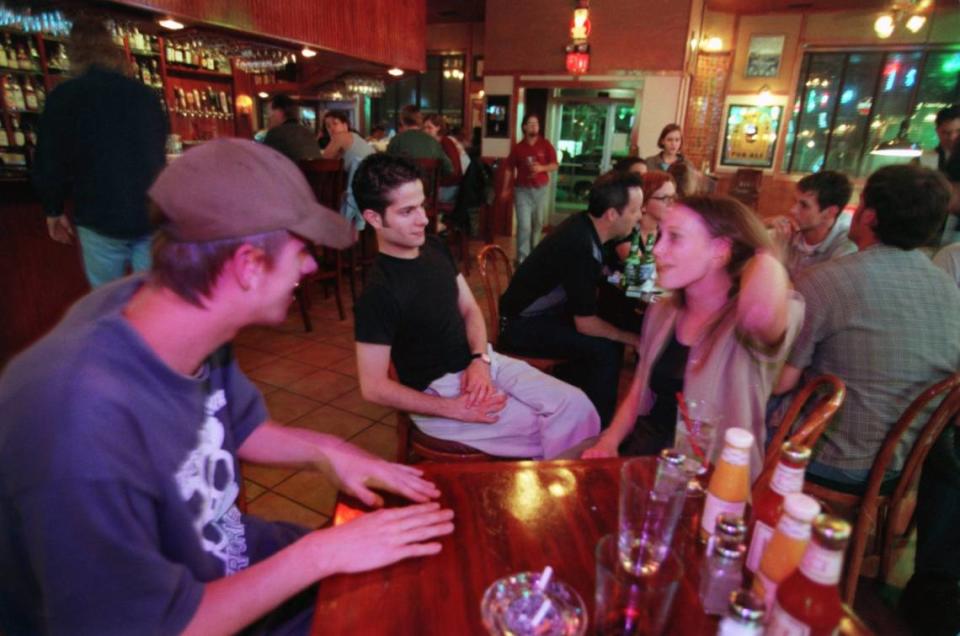
What were they actually drinking at these spots? According to owner of Dot Dot Dot, Stefan Huebner, a typical ’90s night started with “beer and shots as they were typically cheap specials. Many nightclubs had $1-3 dollar drink nights … For fancy nights out, we traditionally drank martinis or big glasses of red wine from a steakhouse or French-style restaurants. By the late ’90s, Red Bull energy drinks had entered the market and fully taken over, introducing the vodka Red Bull or Jager bombs.”
According to longtime servers like Tammy Hamilton at the Diamond, despite the restaurant’s long tenure, the day-to-day reality of restaurants like the Diamond has changed since the ’90s. “I like it the way it was,” she said, referring to when the mayor sat next to blue-collar workers and when the line stretched out the door.
On a similar note, Kirk waxes poetic about the brief, but influential, tenure of a community-focused coffee shop called St. Ruby’s Java Joint in NoDa in the mid-’90s.
“It left a huge impact,” he said. Ruby’s, on the corner of 34th and North Davidson streets, housed a bookshop, welcoming couches, an art gallery and live music on the back patio. And of course, good, cheap brewed coffee.
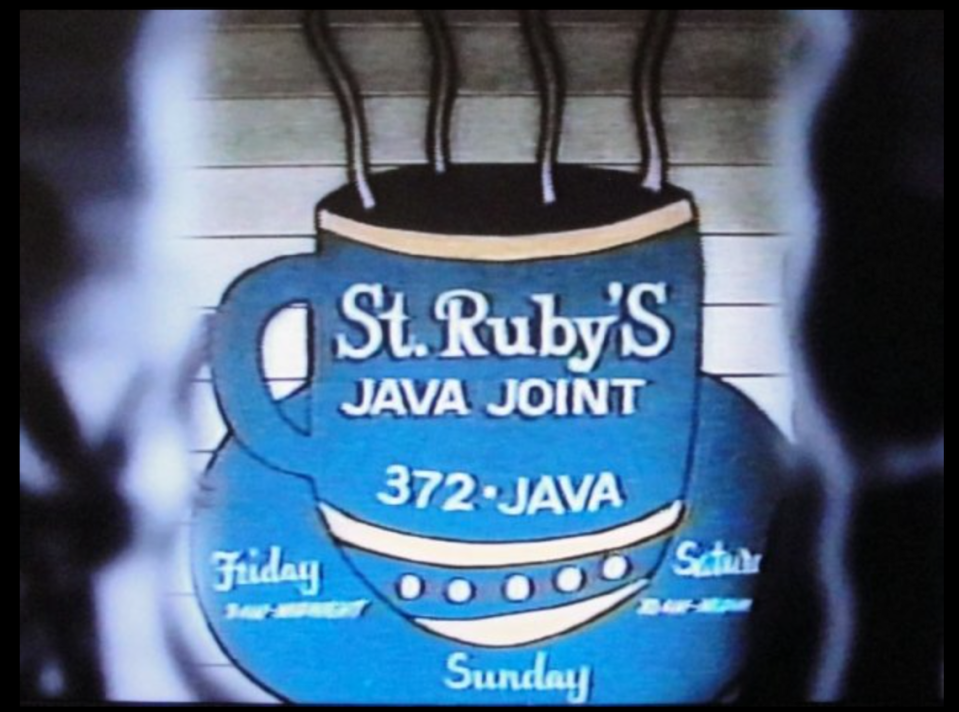
At coffee shops today, Kirk notes that “everybody’s in their own little world.” But at joints like Ruby’s, “it wasn’t just about going to space by yourself, it was more about being around other people,” he said.
The lore that spots like Ruby’s or Thomas Street Tavern hold points to the pivotal role that the built environment plays in shaping a city’s identity, and subsequently, its people.
The built environment refers to the manmade structures that support human living, work and recreation; this includes third spaces like coffee shops, music venues and even dive bars.
That’s why Nicholls believes in supporting small businesses.
“These are placemaker places,” she said. “They are places where people come together and rub elbows, and that’s what people need to do more. When you forget the built environment, you’re going to begin to lose connections.”
Although the built environment of the Charlotte in the ’90s and Charlotte today are undeniably different, I feel lucky that several of these spots are still around, even if they’re in the shadows. A night out at an off-the-beaten-path music venue or a seat at an old dive bar reminds me why some places are worth keeping around.
Uniquely Charlotte: Uniquely Charlotte is an Observer subscriber collection of moments, landmarks and personalities that define the uniqueness (and pride) of why we live in the Charlotte region.
